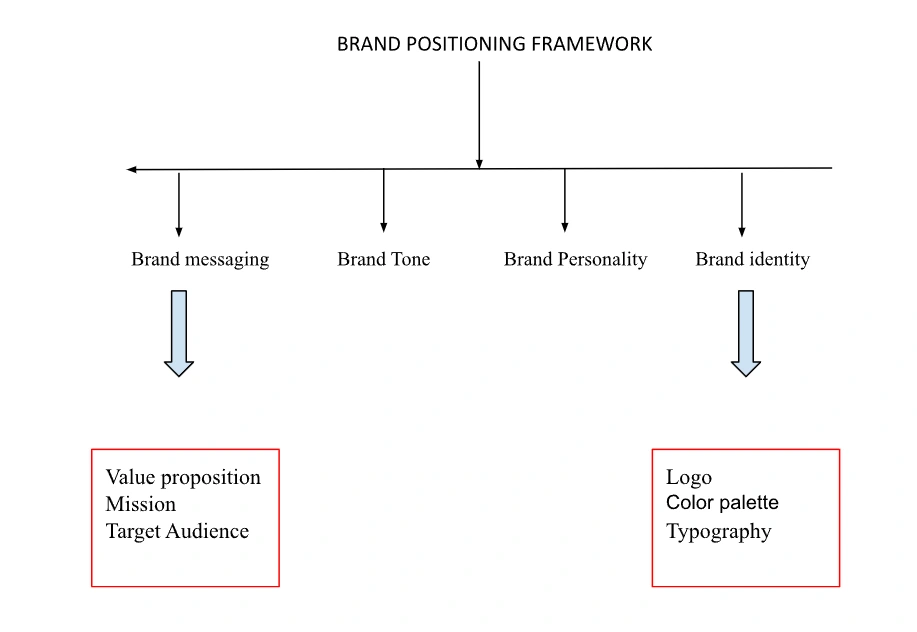Branding,Jeff Bezos once said, “A brand for a company is like a reputation for a person. You earn that reputation by trying to do hard things well.” At Kalyani Solution, we believe Branding is not just about a logo or a tagline — it’s the invisible power that transforms the ordinary into the extraordinary, and the average into the unforgettable.
In today’s hyper-competitive market, where countless businesses offer similar services, branding is your ultimate differentiator. It tells the world why you do what you do — not just what you do. And that “why” is the emotional connection that inspires trust, loyalty, and action.
But here’s the truth: successful brands don’t happen by accident. Behind every memorable brand is a thoughtfully crafted brand strategy — a roadmap that defines how your business is perceived, how it communicates, and how it connects with its audience.
Ready to discover how your brand can stand apart? Let’s explore a step-by-step guide to building a brand that’s not just seen — but remembered.
What is Brand Strategy?
Brand strategy is the first stage involved in the branding process. Marty Neumeier, an author who writes about branding and marketing, defines branding strategy as “A plan for the systematic development of a brand in order to meet business objectives”.
Marketers conceptualize a brand strategy to shape the perceptions of a brand’s audience so that they can ultimately influence them. Thus, we can say that brand strategy sets out a plan to show these perceptions through two forms of expression: visual and verbal. How do we make an exceptional strategy for your brand? By knowing how to position your brand.
Brand positioning is nothing but placing your brands in the minds of the customers in a recallable way that sets your brand apart from others. It isn’t just a tagline or a fancy logo; it is the plan with a set of action points that positions your brand in the market.

Brand Messaging
Brand messaging is the message you will communicate your business’s unique value proposition and personality through verbal or nonverbal communication. This message can motivate and encourage your target audience to make a purchase.
To start creating your unique brand messaging, try answering the following questions:
- How do you differentiate from your competitors?
- USP: Unique Selling Point
- Who are your target audiences?
- Does your brand story resonate with your audience?
To understand better, let’s see the below example: Dove’s mission statement and value proposition encourage women to shatter their notion of beauty and embrace themselves by using Dove.

Dove’s focus on enhancing natural beauty can encourage women (target audience) to use Dove products at some point in their lives. And this is why brand messaging is important.
Brand Tone
The brand tone is the brand personality that your brand will use for all its communication. Setting the brand tone gives one guideline on how to set the personality of the brand across all communications. Creating a brand tone is using your buyer persona ( the target audience defined earlier) and crafting a message that will connect or resonate with the target audience.
To understand better, look at the screenshots of tweets posted by Spotify. Spotify uses a very casual tone in its tweets. Now, we imagine Spotify as a person; that person would be witty and funny and have up-to-date knowledge of pop culture and trending music. It has used this identity to write its messages across media to connect with its audiences (music lovers) all over the world. Here, casual, sassy, and fun is the tone being used to develop a brand personality.
Brand Identity
Brand identity is the other important part of the branding process. It involves guidelines to set the style of the brand. This brand style guide encompasses all the aforementioned points and, in addition, variations of logo design, typography and colours that define the brand. While creating a logo, the use of colour and other factors should be as per the personality of your brand. At times, people recognize a brand with either its logo or typography.
For example, it doesn’t take much time for people to recognize that it is the image of the Mercedes Benz logo.
Brand Touchpoints
The next important point in brand processing is Brand touchpoints. By now, we have learned the importance of the brand message, brand style and brand persona. However, a brand touchpoint is nothing but the connection that your brand makes with its audience. It is the individual contact point between the customer and the brand.
To understand this better, let us see what are some of the common brand touchpoints:
- Social media
- Website
- Blogs or newsletters
- Any company content ( podcasts, videos, audio, online reviews, emailers, etc.)
The information fed into these platforms can be entertaining, educational, motivational or for sales purposes.
Another lesser-known brand touchpoint is the conversations that audiences have with your business representatives. It isn’t important for your audiences to always make a purchase, but whenever they approach any representative, it is important they have a remarkable experience. This pools back the potential customers or buyers to your brand. Hence, setting up customer feedback platforms and support channels is also included in brand touchpoints.
Brand Management
The branding process does not end with conceptualizing a foolproof branding guideline (as mentioned above). Branding is not a one-time job; it is an ongoing process and requires consistent effort and attention.
A good example of this is the Surf Excel ad campaigns. Its entire marketing is conceptualized on the premises that ‘Dirt is good ( daag ache hothe hai)’. To achieve its goal, they have used various themes using kids, focusing on religious sentiments, festivals and even youngsters to attract its audience over and over again. Every new ad released by Surf Excel hits an emotional note among the audience, and it gains new customers or is strategically able to retarget its existing customer base.
What does this tell us?
The benefits of effective brand management are:
- Brand equity
- Customer loyalty
- Consistency
- Risk management
- Market Expansion
But this isn’t a one-man’s job. Modern-day marketing strategy often requires help from digital marketing agency (external) that will help you curate the brand image you want to portray online. The reason why such agencies are helpful is because they are trained and skilled to study the market and propose a unique strategy. Additionally, they also assist in measuring the progress of your branding. Brand managers at these agencies use various tools and other additional Google-approved tools to help you achieve your goal.
Final Thought
The process of branding is hard work, and what is tougher is to be consistent in your efforts to always stay at the top. One of the crucial ways to stand out easily in this cutthroat is to understand the uniqueness of your brand and create a compelling story around it. The most important point to remember here is that by communicating uniqueness to your customers, you are strengthening your selling and brand value. The rest of the responsibility of creating strategic branding can be collaboratively done with the help of Branding Agency which is specialized in the same.
Most Searches :
10 Powerful Strategies to Optimize Your Website for SEO in 2025 | 10 Benefits of Hiring a Digital Marketing Agency
